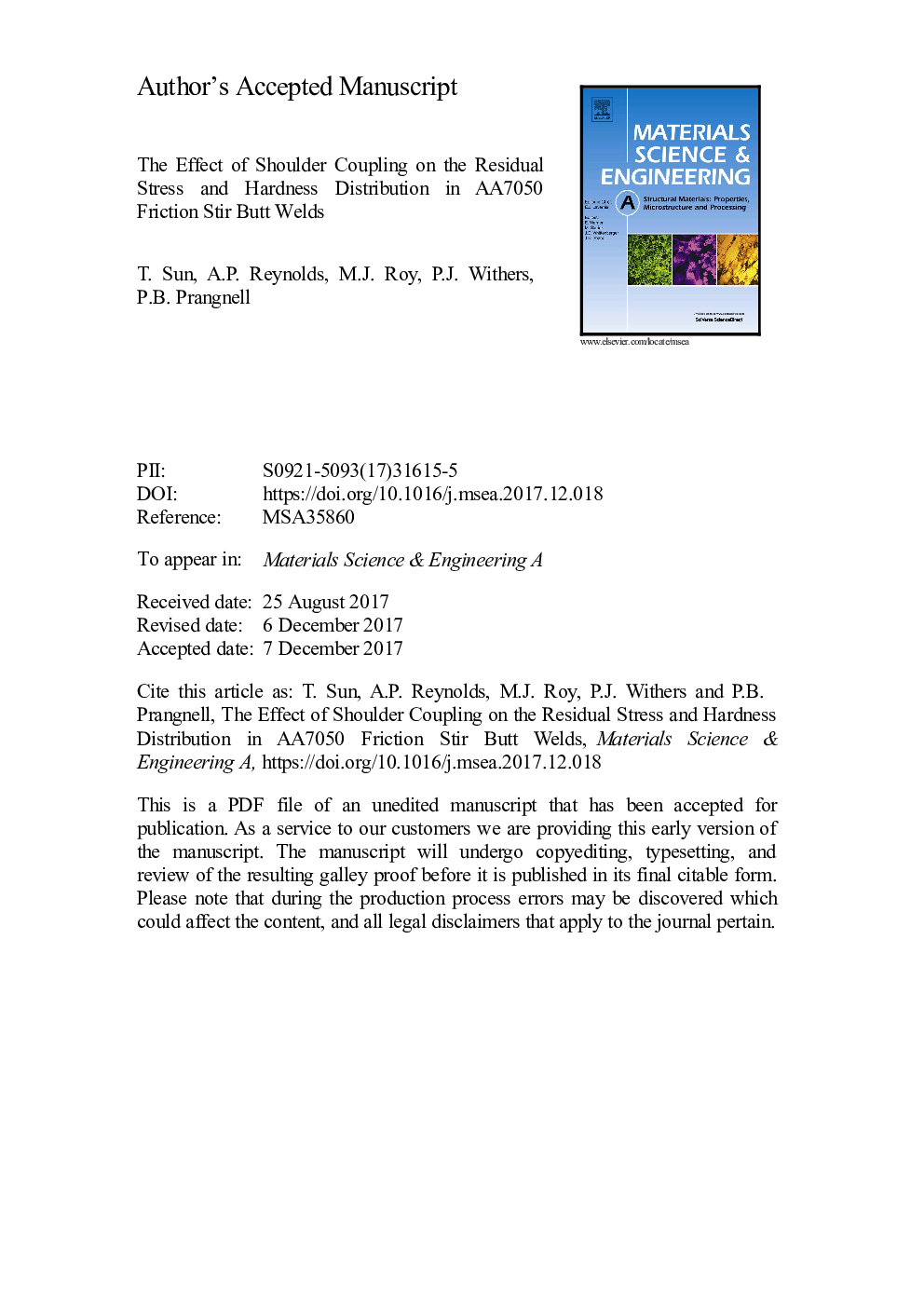| Article ID | Journal | Published Year | Pages | File Type |
|---|---|---|---|---|
| 11007008 | Materials Science and Engineering: A | 2018 | 27 Pages |
Abstract
The effect of shoulder coupling in friction stir welding (FSW) on the distribution of residual stresses, microstructure and hardness has been investigated by comparing welds manufactured with a conventional tool, using different levels of downforce, to joints produced using a stationary shoulder (SSFSW). The welds were produced in AA7050-T7651 6.35â¯mm plate with the same travel speed and similar power levels. Reducing the tool downforce in FSW led to a decrease in the overall shoulder input power, but a minimal reduction in the weld zone hardness and peak residual stresses. In contrast, relative to FSWs made with a similar input power, the stationary shoulder led to much more significant microstructure and property changes including a reduction in the HAZ width, an increase in the minimum weld zone hardness level and a significant reduction in the peak tensile residual stresses (by ~ 25%). With SSFSW, the improvement found in the hardness and residual stress distribution from eliminating the energy dissipated by the tool shoulder could be directly correlated to a reduction in the weld temperature and narrowing of the thermal field, which reduced the size of the HAZ and region of plastic misfit responsible for the weld residual stresses. By comparing the results with previous work it was found that, apart from using a stationary shoulder, the most important welding parameter affecting the weld zone peak tensile stresses was the travel speed, with longitudinal residual stresses doubling upon increasing the travel speed from 100 to 400â¯mm/min.
Related Topics
Physical Sciences and Engineering
Materials Science
Materials Science (General)
Authors
T. Sun, A.P. Reynolds, M.J. Roy, P.J. Withers, P.B. Prangnell,
